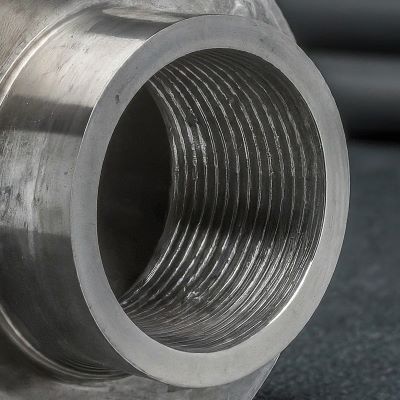In the intricate world of piping systems, connecting components securely and reliably is paramount. Enter the socket weld, a joinery technique that shines in demanding applications. Whether you’re dealing with high-pressure oil pipelines or delicate chemical reactors, understanding this critical connection is essential.
What is a Socket Weld Fitting?
Imagine a cup with a snug inner rim. Insert a perfectly sized pipe into this cup, and you’ve got the essence of a socket weld fitting. The fitting’s recessed cavity, the “socket,” accommodates the pipe, creating a seamless joint sealed by a continuous weld along the rim. These welds, typically fillet welds, provide exceptional strength and leakproof integrity.
While primarily used for smaller diameter pipes (generally under 2 inches), socket weld fittings exist in a diverse range of shapes and sizes. From elbows and tees to flanges and caps, they offer versatility for tackling various piping configurations.
Advantages of Socket Welding
➡️ Unwavering Strength: The fusion of pipe and fitting creates a robust joint capable of withstanding significant pressure and stress.
➡️ Impregnable Seal: The weld eliminates leaks, critical for handling dangerous or valuable fluids.
➡️ Vibro-Thermal Champ: Unlike some threaded connections, socket welds resist loosening due to vibration and thermal expansion, ensuring system stability.
➡️ Maintenance Made Easy: Smooth interior weld profiles reduce flow resistance and facilitate inspection and cleaning.
Disadvantages of Socket Welding
➡️ Skill Matters: Achieving flawless welds requires specialized equipment and highly skilled welders, adding to project complexity.
➡️ Material and Size Specificity: Not all materials and pipe thicknesses are suitable for socket welding. Consult welding codes for compatibility.
➡️ Cost Considerations: Compared to simpler methods like threading, the specialized equipment and skilled labor push up the initial cost.
When to Use Socket Welding
➡️ Critical Pipelines: For systems carrying hazardous liquids, high-pressure gases, or valuable fluids, the leakproof security of socket welds is invaluable.
➡️ Pressure Vessels: When vessels must withstand significant internal pressure, the robust nature of socket welds provides the necessary strength.
➡️ Space Constraints: The compact design of socket weld fittings saves precious space in tight or congested areas.
Types of Socket Weld Joints
➡️ Full Penetration: The weld completely penetrates the pipe wall and fitting, offering the highest strength but requiring greater skill and thicker materials.
➡️ Partial Penetration: The weld fuses a portion of the pipe wall and fitting, suitable for moderate pressure applications.
➡️ Socket Weld Flange: Combines a socket weld fitting with a flange, simplifying connection to other components.
FAQ’s
Q: What is the difference between a socket and a butt welded joint?
A: Butt welds directly join two pipe ends, requiring precise alignment and specialized equipment. Socket welds offer easier alignment and leak proof seals but at the cost of reduced strength compared to full penetration butt welds.
Q: What is the difference between a socket and a threaded end?
A: Threaded connections offer quick assembly and disassembly but are susceptible to leaks and loosening under pressure and vibration. Socket welds provide superior strength and leakproofness but require permanent joining.
Conclusion
Understanding the power and nuances of socket welding empowers you to make informed decisions in various piping projects. From ensuring optimal system performance to safeguarding safety and integrity, this joinery technique holds a vital place in the world of reliable and efficient flow.
So, the next time you encounter a intricate network of pipes, remember the unsung heroes – the socket welds, silently securing fluid movement with unwavering strength and precision.
Post time: Mar-06-2024


